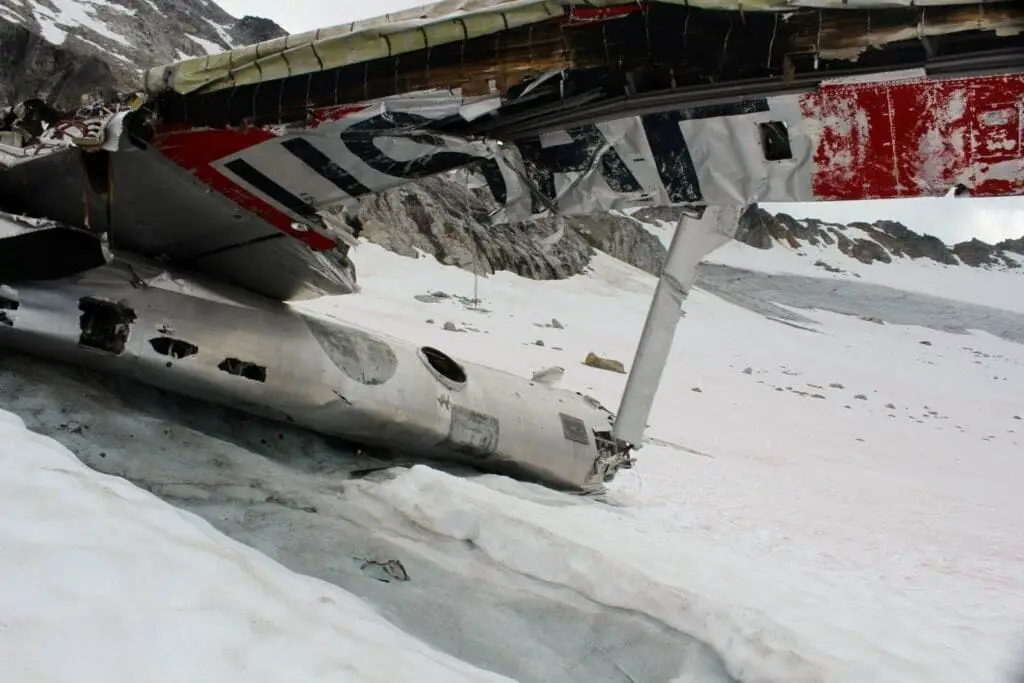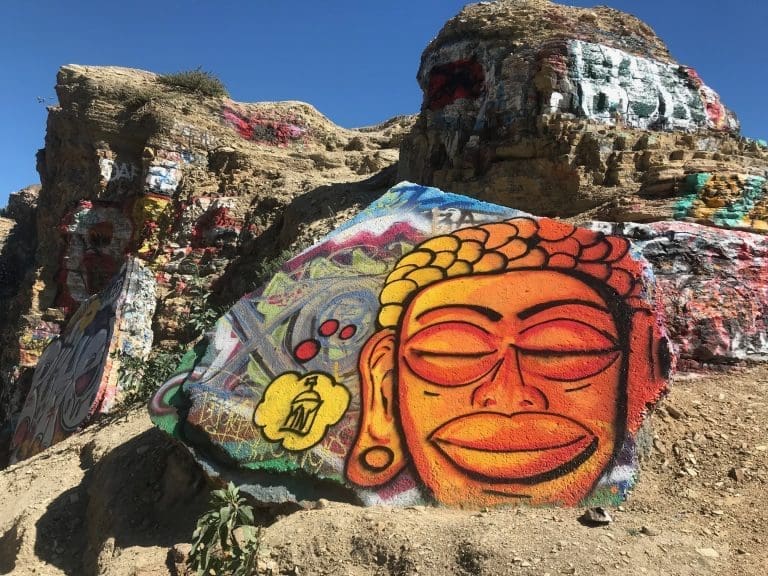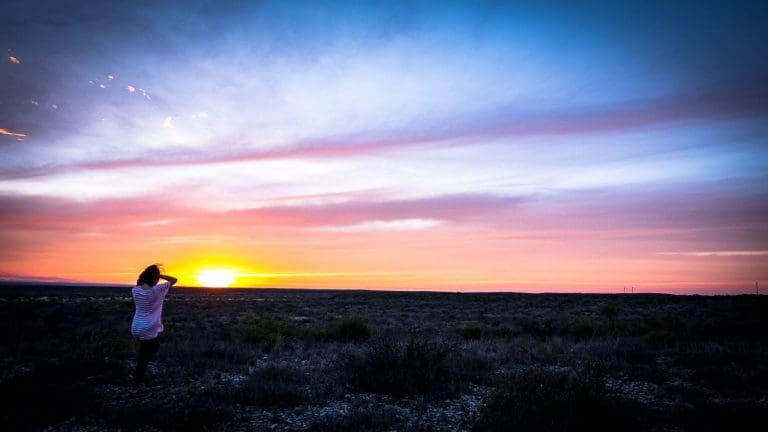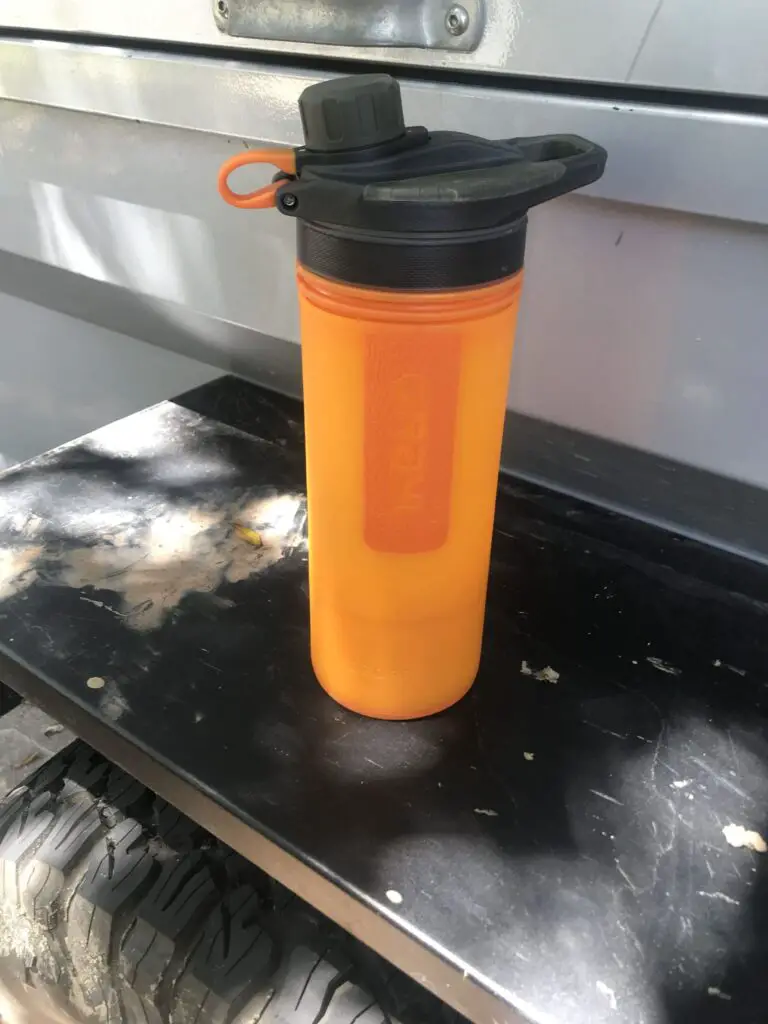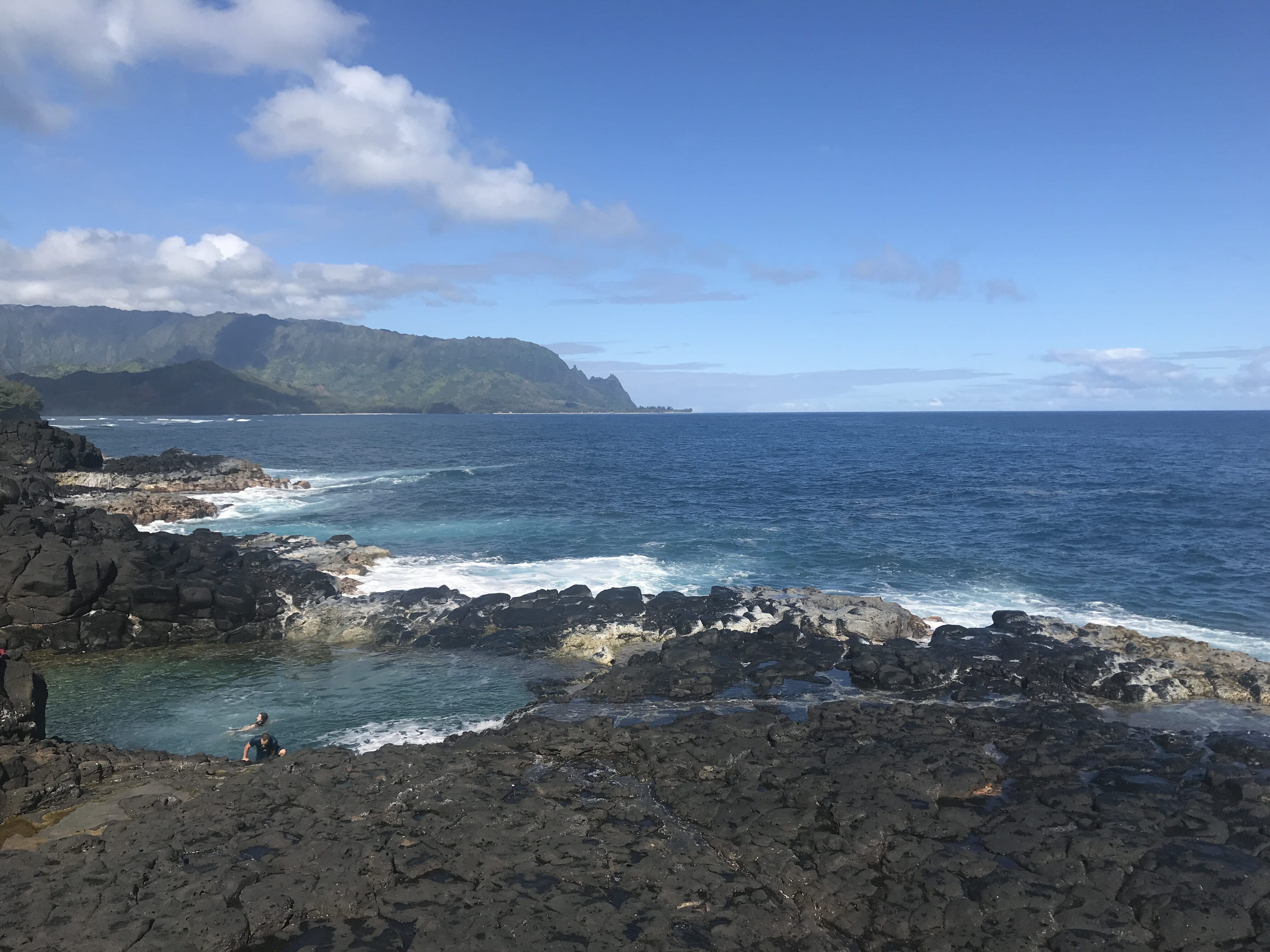Hiking the Bomber Glacier, Alaska
Hidden deep within the Talkeetna Mountains of Alaska lies a breathtaking spectacle where nature and history collide—Bomber Glacier. This isn’t just any hiking destination; it’s a portal to a time when heroes ruled the skies. As you traverse the rugged paths that lead to the glacier, each step takes you closer to uncovering the remnants of a World War II bomber, frozen in time and shrouded in mystery. Join us on a journey that promises not only majestic landscapes and challenging trails but also a poignant glimpse into America’s aerial past. Prepare to be captivated by the untamed beauty and the stories etched into the icy expanse of Bomber Glacier
Bomber Glacier
I reached out and touched the metal. It was cold. In front of me, a broken and weathered engine of a TB-29 Superfortress. A nuclear-capable strategic bomber, similar to the ones that delivered their atom-splitting payloads over Japan in August 1945. But I was not in a museum, or at an airfield or airshow. I stood there beside my uncle on the Bomber Glacier in the Talkeetna Mountains, not too far north of Palmer, Alaska. All around us lay the wreckage of the bomber, once the pinnacle of the technology of destruction in the Cold War, now no more than twisted metal on the ice. A wing over here, the crushed remnants of the fuselage over there, the engines, still remarkably intact, lay separated. The four-bladed rotors were bent or broken, such was the force of the impact, strong enough to bend the steel itself.
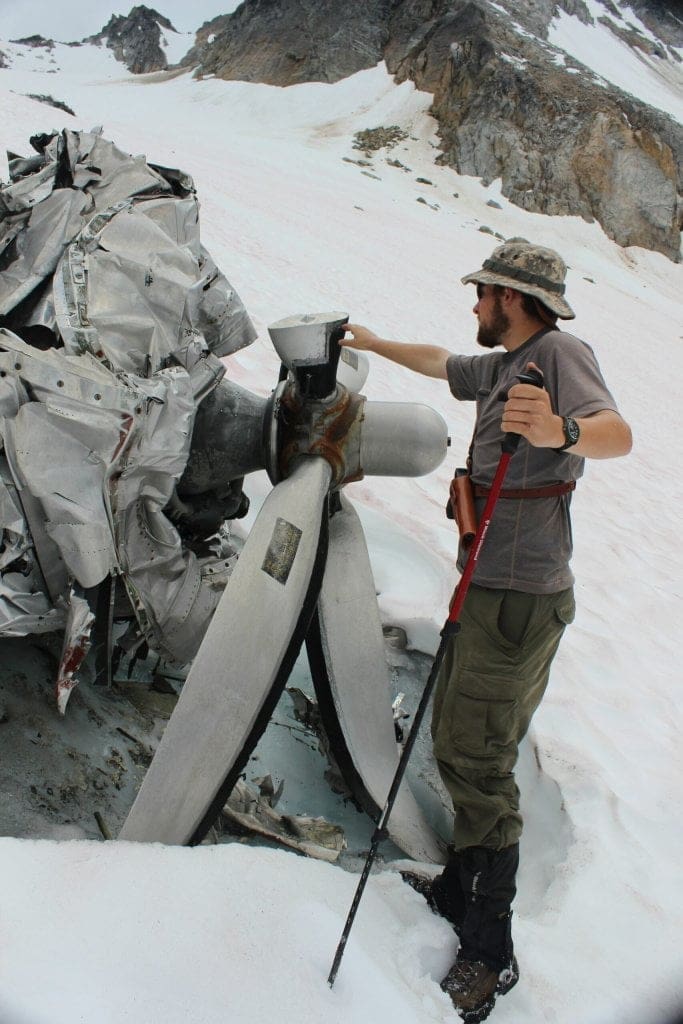
The cockpit, indeed, the entire front half of the plane was gone, ripped from the rest.
Safety Tip: Bring more water than you expect! A Portable filtered water bottle is great for additional water while on the trail.
What seemed to be the front half was separate, crushed on the ice quite far from the rear of the plane. The most recognizable pieces were the tail section, the four gigantic engines, the unused landing gear. One of the wings lay separate from the rest, ripped from its body. The other wing sat on top of the fuselage, somehow flipped around on impact. The black marks remained there on the wings, USAF. There was avionic equipment strewn about, all sorts of control panels and wires. The aircraft seemed to have impacted the glacier with its landing gear extended, as some of the gear was several hundred yards away down the glacier, as if the pilots were preparing to land. The day was not particularly cold, but a chill seemed to hang over this glacier as a wind blew off the nearby peaks.
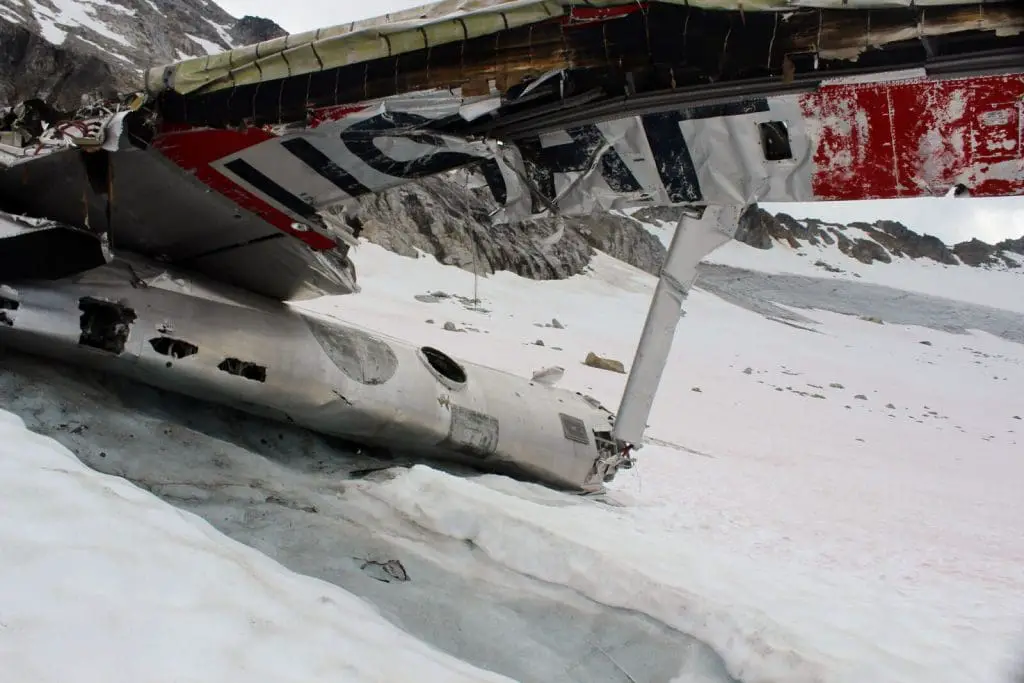
WWII Bomber crash site Alaska
How did this marvel of military engineering meet its end in this place? On a glacier in the wilderness? On November 15, 1957, this TB-29 took off from Elmendorf Air Force Base in Anchorage on a routine radar calibration flight. However, in severe weather (quite characteristic of the Talkeetna’s), they strayed off course. Blinded by the storm and flying simply by their instruments, the pilots had no warning. The bomber struck an unnamed glacier. Of the ten-man crew, six died, including the pilots. Four, however, survived. Air Force Staff Sergeant Calvin Campbell received the credit for ensuring the survival of the others, as he dragged them from the wreckage and wrapped them in sleeping bags and parachutes until the storm passed and rescue arrived.
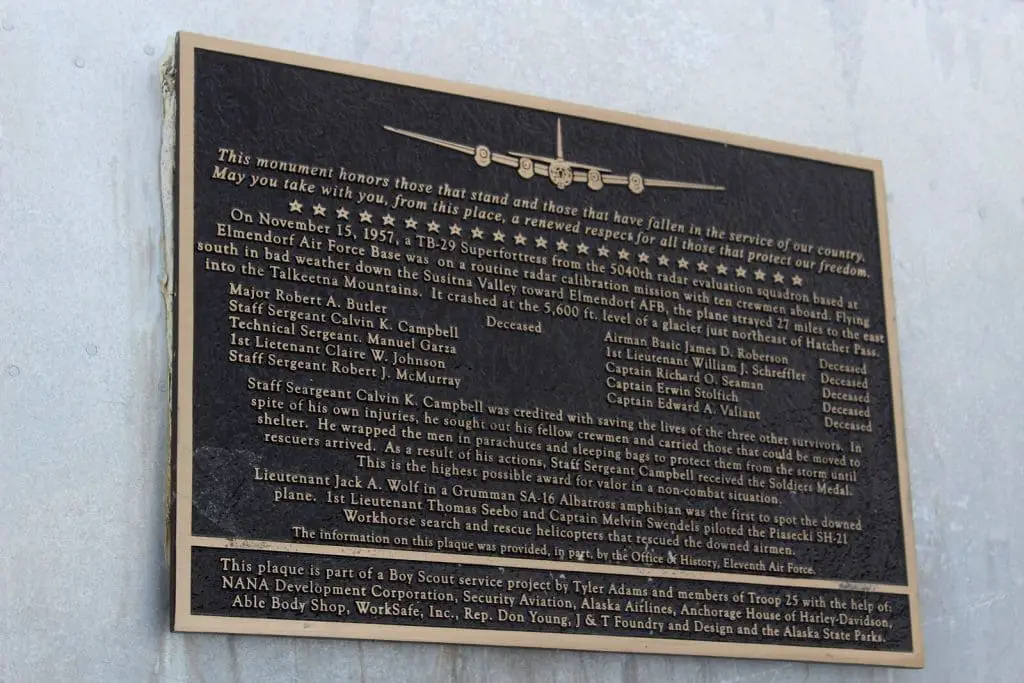
And so there we stood, dwarfed by the remnants of the aircraft. Superfortress. A well-earned name. It’s hard for me to write the surrealism of the place, it was as if we had stumbled on a fallen dragon lying there on the ice. Or discovered the Loch Ness Monster deceased on the shore. Bombers like this one were at one point the main nuclear striking arm of the United States. This one was based in Alaska as a training aircraft, but others just like it were there for their proximity to Russian bases like Vladivostock.
By 1957, the TB-29 was no longer a viable deep strike bomber, replaced by the B-52, which is still in widespread use. But the plane was still used as a training aircraft for bomber crews. The round, wide-angle cockpit was even the template for Han Solo’s legendary Millenium Falcon in Star Wars. These planes occupy the role of legend, symbols of a nation’s strength. But this one was here on a glacier so far out of the way that before the crash, the glacier had no name. Now the glacier is simply referred to by its unofficial name, the Bomber Glacier. Official government maps to this day do not give the glacier a formal name.
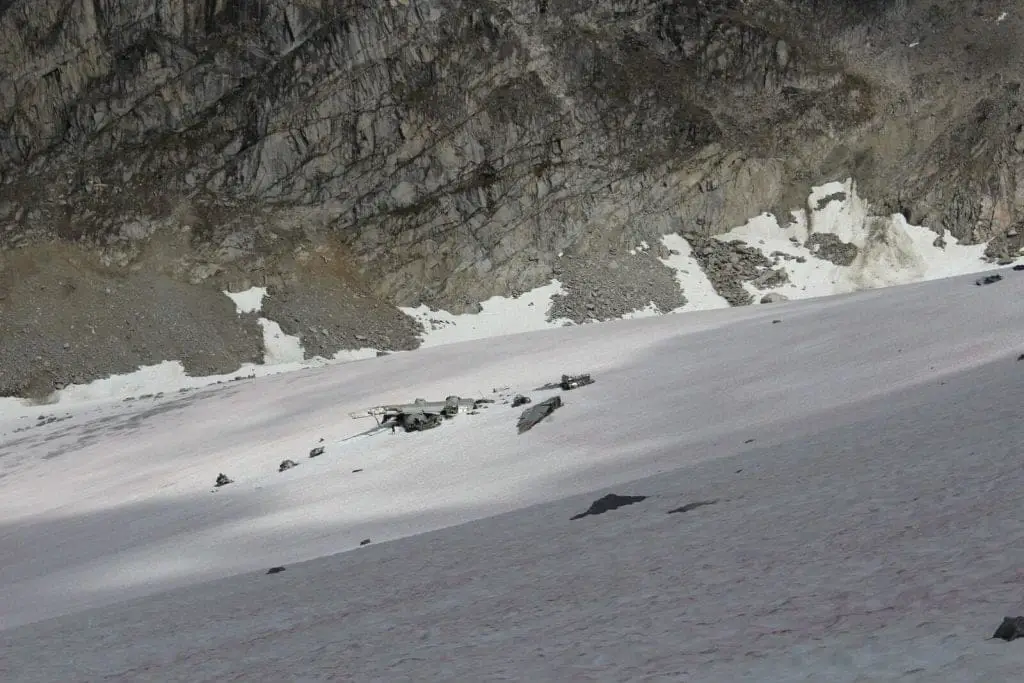
Bomber Glacier trail Guide
The Bomber Glacier isn’t too hard to access from the trailhead at the end of Archangel Road, just east of Hatcher Pass. After only a few hours of hiking, my uncle and I passed the Reid Lakes and ascended a boulder field, from which we got our first glimpse of the plane I had heard so much about. From that ridge line, the bomber truly did look like a poor, broken dragon brought low by some knight. We made our way down to the glacier, a safe and solid one. We didn’t need ropes to be safe here, though he did mention that there are unsafe parts of the glacier, so I was glad to have my uncle as a guide, who lived nearby and knew the area well.
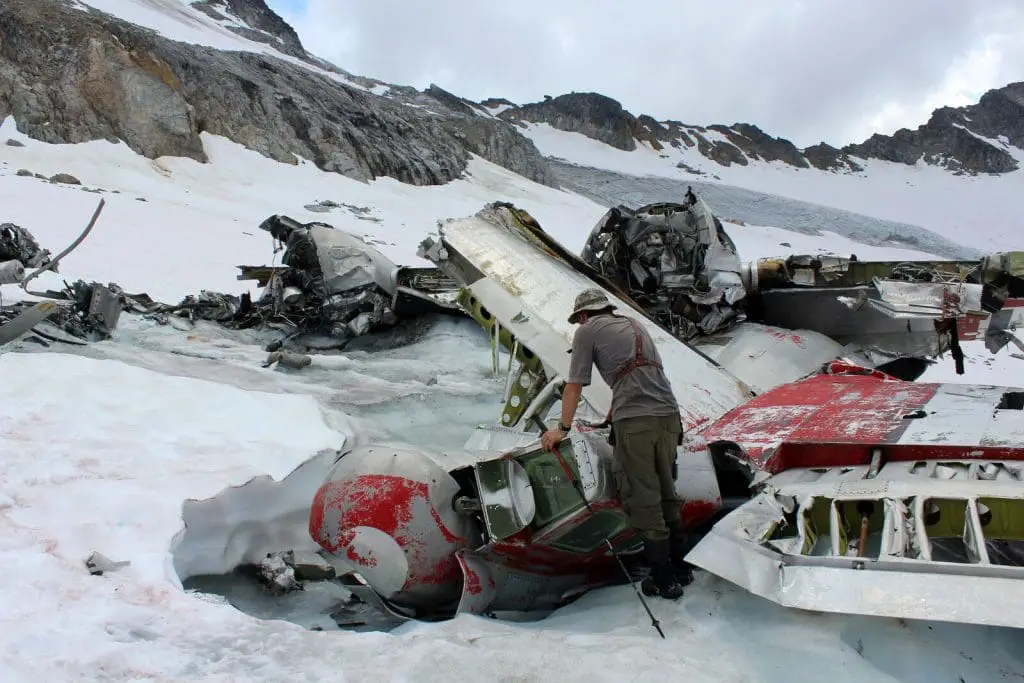
The rest of the way to the Bomber Glacier was easy enough. And then we were there. I stood beside an engine, dwarfed by the rotor blades. It felt monumental. It also felt like we were intruding. The vista was one of the most amazing I’ve ever seen, but I could not shake the thought that six men died here, on this glacier. Though the crashed bomber was magnificent in a kind of post-industrial aesthetic way, it was also a grave marker.
Though the bodies themselves were retrieved and buried long ago, the place still felt… strange.
It reminded me of cathedrals or battlefields I’ve been to. Sites like these have a majesty to them, they are dignified. They have what the ancient Romans would have called gravitas, which translates as gravity, but more. It brings a solemn feeling with it, as if it has true, physical weight. In this case, the beauty of the place highlighted the gravity of what had happened. As much as I love the wilderness, it’s wrong to forget that a simple navigational error can lead to death if all the dominoes are stacked upright.
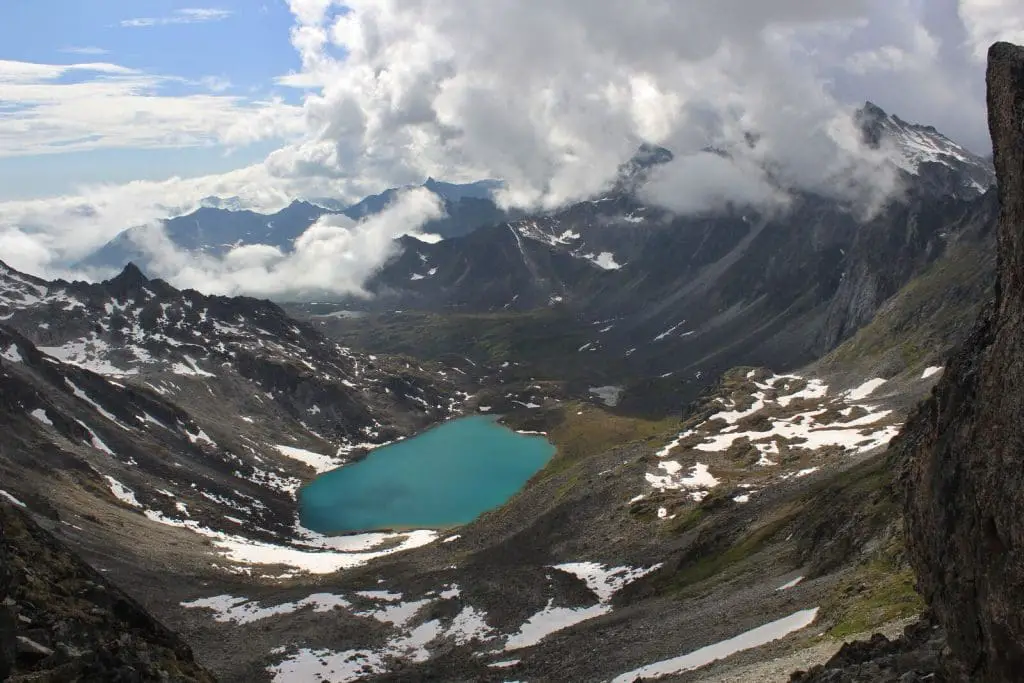
So when I reached out and put my hand on the rotor blade, I felt a strange, tangled mix of emotions. I was standing there beside the dead dragon, and I felt sad. But I was happy to be in the wilderness again, back in the field. I’m still not totally sure how to put those feelings together in one place. But I can say with some confidence that the best emotions are the complex ones, sometimes the conflicting ones. The ones that force me to feel empathy for others who were here.
Like I said, visiting the bomber was like going to a battlefield. If you try hard enough, you can still hear the engines still pounding against the blizzard, or the pilots cursing the fact that they couldn’t see. There’s almost an echo of the screams of the survivors in the rear section, so shocked and surprised that they were now on a glacier instead of in the air.
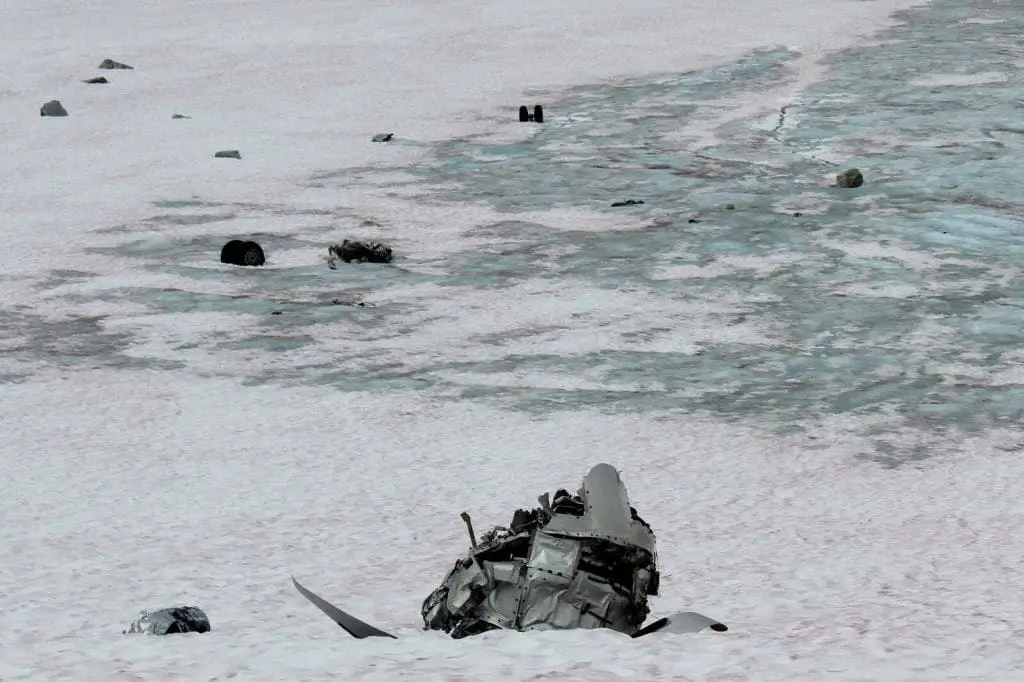
Historical hikes in Alaska
Hikes like this one are one of a kind. They juxtapose the unholy union of nature and industrialism. Again, the bomber struck me as no odder than a dragon would have. On some level, it doesn’t belong there. It’s a nuclear age marvel, a war machine meant to rain death onto cities. But there it is, an unnatural thing consumed by nature. This was a Superfortress, supposedly able to withstand hails of anti-aircraft fire, multiple engine failures, and other damage in battle. But a storm and a mountain brought it down.
In his legendary poem Ozymandias, published in 1818, Percy Shelley wrote:
‘My name is Ozymandias, King of Kings;
Look on my Works, ye Mighty, and despair!’
Nothing beside remains. Round the decay
Of that colossal Wreck, boundless and bare,
The lone and level sands stretch far away.
He was referring to an inscription on a statue of the Egyptian Pharaoh Ramesses II, who had once ruled a vast empire, but whose ancient statue now stood for nothing. His empire fell, and now the desert sands consumed the statue. This bomber is the same. Once a symbol of a nation’s military power, now a relic on a glacier. This was a delivery vehicle for the most powerful weapons ever made. Today the bomber remains there on the glacier, ripped to pieces in its final moments.
There was no drama, no nuclear fireworks. Only a crash, then silence. It reminded me of post-apocalyptic scenes from The Road, or Horizon Zero Dawn, or The Last of Us. The most powerful tools man could devise, now broken. Once upon a time this machine, this dragon-like creature would have been foreign to the area. But now, it is the bomber of the Bomber Glacier. The two go hand in hand and will continue to do so forever.
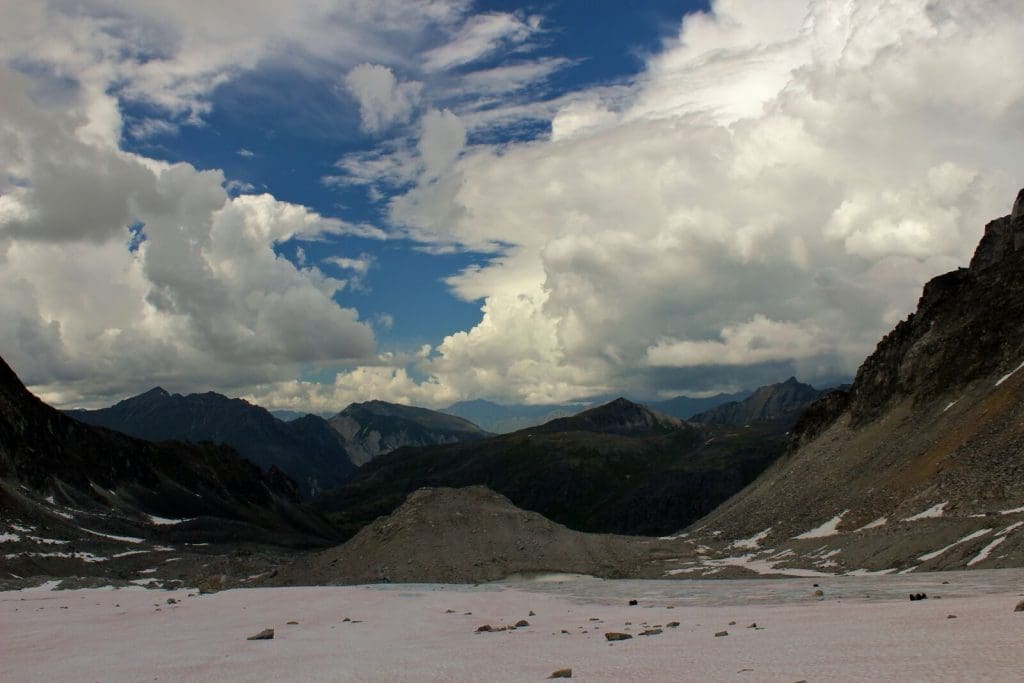
As we wrap up our journey to the remarkable Bomber Glacier, it’s clear that this hike is more than just a trek through Alaska’s rugged beauty; it’s a walk-through history and a tribute to the resilience of both nature and humanity. From the breathtaking vistas at every turn to the poignant wreckage of the WWII-era bomber that gives the glacier its name, this adventure offers a unique blend of awe and inspiration. Whether you’re a seasoned hiker looking for your next challenge or a history buff drawn to stories carved in ice, Bomber Glacier awaits to redefine your limits and expand your horizons. So, lace up your boots, prepare for the unexpected, and discover the stories frozen in time at one of Alaska’s hidden treasures
This is Alaska adventure travel at its finest!
Pin it! Save & Share
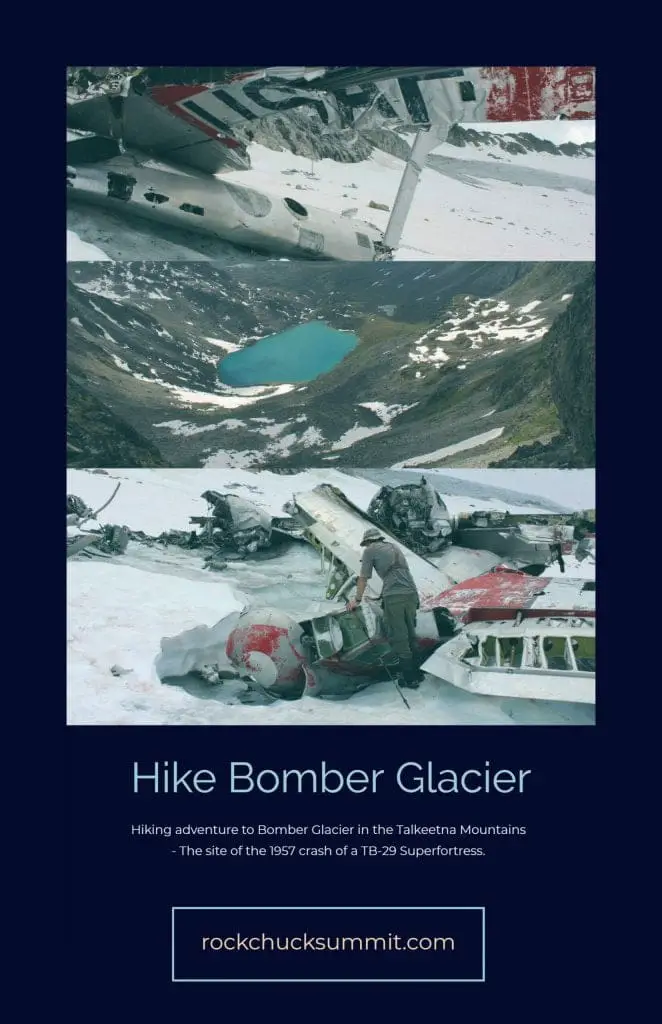
Have you been to Bomber Glacier Alaska? We’d love to hear your stories and have your feedback! Leave a comment below!

